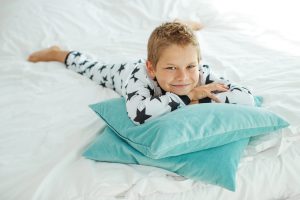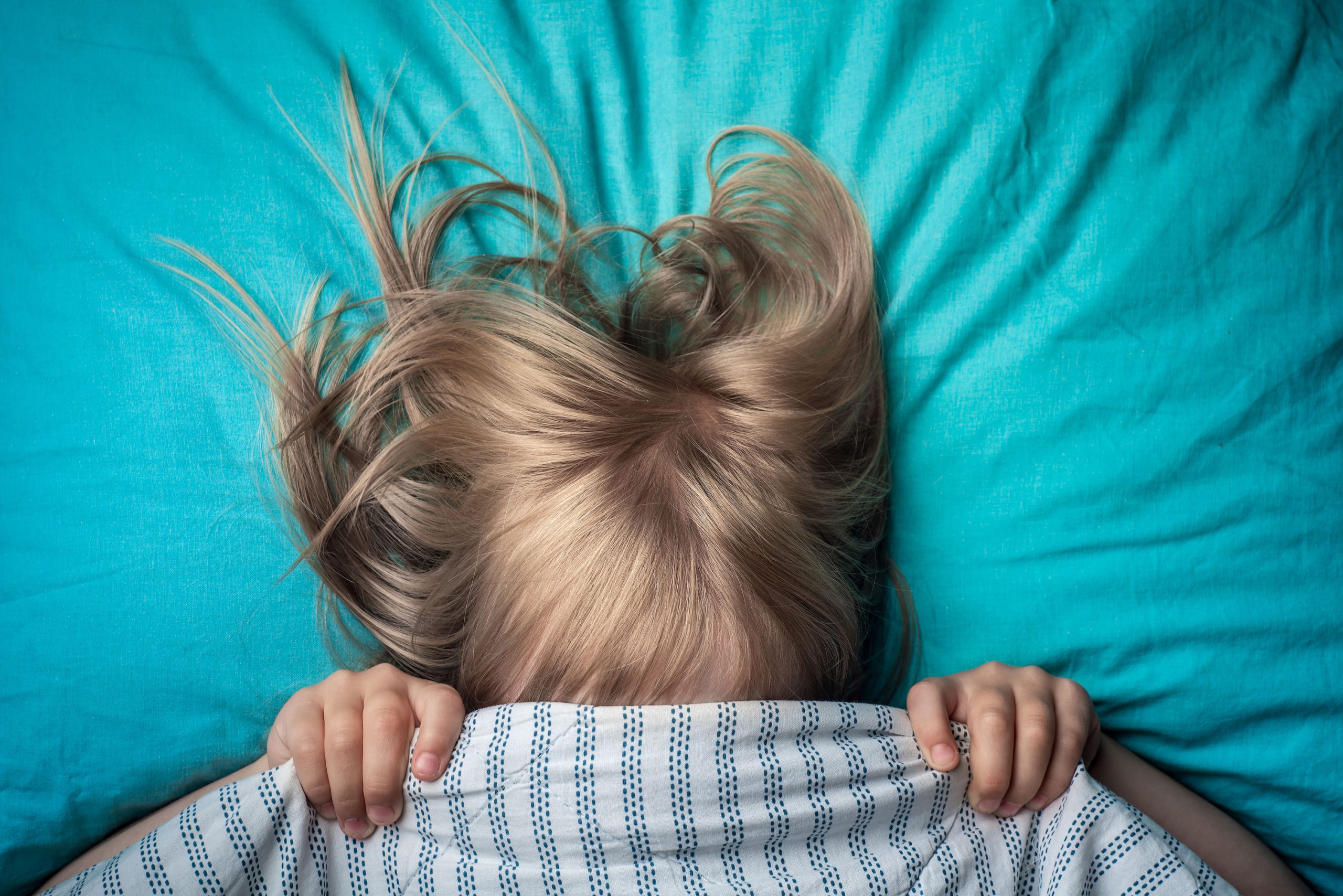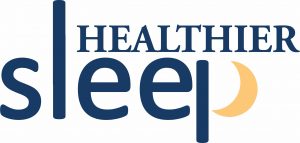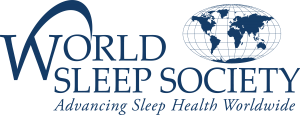Pediatric sleep issues affect millions of children to varying degrees. According to the American Academy of Pediatrics, between 25% to 50% of preschool-age children have sleep-related problems. It is also estimated that 40% of adolescents also have sleep problems. Some of those children have a pediatric sleep disorder referred to as a sleep-related movement disorder (SRMD).
SRMDs involve repeated body movements that occur during sleep or when a person is falling asleep. There are a few different SRMDs, including restless legs syndrome (RLS) and periodic limb movement disorder (PLMD). Learning more about both conditions can help parents get the right treatment for their children.
“Anywhere from 7 to 35% of children with ADHD also meet the criteria for a diagnosis of RLS.”
WHAT IS PEDIATRIC RESTLESS LEGS SYNDROME?
RLS is classified as a neurological condition that tends to run in families. It involves a strong urge to move the legs along with an unpleasant sensation in the legs. Typically, RLS is worse during times when someone is inactive, such as when they are resting or relaxing. Symptoms usually occur mainly at night.
Although RLS occurs in adults, it often starts before age 20. According to the Restless Legs Syndrome Foundation, about 35% of people with the condition developed symptoms before the age of 20. It is estimated that in the United States, about 1.5 million children and teens have RLS.
PEDIATRIC RLS SYMPTOMS
For a diagnosis of restless legs syndrome, five features must be present, which include the following:
- A strong urge to move the legs, which is accompanied by an unpleasant sensation in the legs
- Symptoms worsen during inactivity, such as lying down
- Symptoms improve with activity, such as walking
- Symptoms are worse in the nighttime hours
- Symptoms are not due to another condition, such as arthritis or leg cramps
WHAT IS PEDIATRIC PERIODIC LIMB MOVEMENT DISORDER?
PLMD is another form of movement disorder that may affect children. Periodic limb movement disorder involves repetitive limb movements during sleep. PLMD may involve movement of the legs, arms, trunk, or head. It causes sleep disturbances and impaired daytime functioning, which are not due to another sleep disorder. Diagnosis is made through a sleep study (polysomnography).
PEDIATRIC PLMD SYMPTOMS

RLS and PLMD are similar in some ways, but they are two distinct disorders. The biggest difference is restless legs syndrome causes uncomfortable sensations in the legs, whereas PLMD does not. Individuals with RLS may or may not have limb jerking during sleep.
Symptoms of PLMD include the following:
- Repetitive limb movements during sleep
- Sleep disturbances affecting daytime functioning (such as daytime fatigue)
- Five episodes or more per hour as confirmed through polysomnography
- Exclusion of other causes of limb movement, such as RLS or narcolepsy
CAUSES
The cause of SRMD is not entirely known. But RLS appears to be associated with certain conditions, such as attention-deficit/hyperactivity disorder (ADHD).
According to Daniel L Picchietti, MD, a pediatric neurologist, parents often seek a diagnosis for their child not solely based on sleep issues. “Parents tend to be more aware of the behavioral impact of sleep issues and less concerned with the specific limb or leg symptoms,” said Picchietti. Anywhere from 7 to 35% of children with ADHD also meet the criteria for a diagnosis of RLS.
Certain factors also may play a role in developing either RLS or PLMD. For instance, it appears that iron deficiency, dopamine levels, and genetics may affect the likelihood of developing both movement disorders. Children with a family history of RLS and PLMD have an increased risk of developing the disorder.
TREATMENT
Treatment for both RLS and PLMD may involve a combination of lifestyle changes and medication. “The focus of treatment in children is usually to improve sleep rather than leg symptoms,” said Dr. Picchietti.
LIFESTYLES CHANGES
Lifestyle modifications may be enough to treat the condition when symptoms and impact on quality of life are mild. Helpful lifestyle modifications may include:
Healthy sleep habits: Improving sleep habits to include developing a regular wake/sleep cycle and preventing insufficient sleep may help.
Limiting caffeine: Limiting caffeinated drinks, such as cola and hot chocolate can make it easier for children to fall asleep and may improve sleep quality.
Exercise: Exercise may promote deep sleep and can improve RLS in children. Encourage daily exercise for children, which may also benefit mental health issues.
Additional exacerbating issues that should get addressed include underlying sleep disorders, such as sleep apnea. Taking medications, such as sedating antihistamines for allergies, may also interfere with getting good sleep and worsen symptoms of RLS or PLMD. Be sure to talk with your child’s doctor about medication he/she takes to determine if it interferes with sleep.
IRON SUPPLEMENTS
The first-line treatment of RLS and PLMD is iron supplementation, if the child’s iron status (as measured by a test called ferritin) is low or low normal. However, it is important to discuss supplements first with your child’s healthcare provider. This should include a review of the need for iron, discussion of types of iron supplementation, and a plan to monitor for effectiveness and side effects. Oral iron is typically the next step, with intravenously administered iron reserved for complicated cases or instances where oral iron fails.
MEDICATION
In children that have significant symptoms that lifestyle modifications do not help, medication may be an option. It is important to understand that the U.S. Food and Drug Administration has not approved any medication to treat either RLS or PLMD in children. But certain drugs have been used off-label and may help reduce symptoms. Most of the medications used off-label are used in children aged 6 through 18. Examples of medications include:
Gabapentin: This drug is considered a first-line medication for children over age six with RLS. It appears to reduce symptoms of RLS and improve sleep quality.
Clonidine: This medication is used to treat high blood pressure, but was also found to help treat ADHD and sleep onset problems in children. It can have side effects, such as nightmares, and may not be appropriate for sleep maintenance.
Dopamine agonists: Dopamine agonists have US Food and Drug Administration (FDA) approved for use in adults with RLS; however, due to adverse effects these drugs are used less than in the past due to adverse effects. Dopaminergic agents may also work for children but should be reserved for only the most unmanageable cases.
It is important to understand that not every treatment will work effectively for every child. Special considerations may also be needed for children with additional issues, such as anxiety. Also, off-label medication is not generally used in children under age six. Typically, younger children are treated with lifestyle modifications and possibly iron supplements if indicated.
______________________________________________________________________________________________________
MaryAnn DePietro, CRT is a medical writer and licensed respiratory therapist with over a decade of clinical experience, MaryAnn DePietro has been published in magazines, newspapers and on health websites. She earned degrees in both respiratory therapy and rehabilitation. As a therapist, she has worked with hundreds of patients with medical conditions, such as sleep apnea, and other sleep disorders.
References:
RLS & Kids. (2021, Dec. 15). RLS Foundation. https://www.rls.org/understanding-rls/rls-kids



